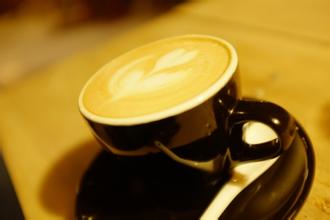Introduction to the characteristics of Brazilian Coffee Flavor and Flavor Manor production area
Brazilian coffee beans, in addition to more than three companies, Brazilian beans are mostly "cheap and high-quality" coffee. Can be used for mass production of comprehensive coffee beans, most of which are re-roasted. The main raw material of instant coffee is also Brazilian coffee beans. When the coffee bean germ is very fresh, it is artificially refined and naturally dried in the vulva for about 60-70 days, so that the sweetness of the pulp fully infiltrates into the bean. Features: coffee beans have a strong aroma, moderate bitterness, high texture acidity, soft overall taste, low acidity and endless aftertaste. The taste of Brazilian coffee has a low sour taste, with the sweet and bitter taste of coffee, the entrance is very smooth, but also with a hint of grass aroma, slightly bitter in the fragrance, smooth and smooth, with a pleasant aftertaste. There are no outstanding advantages for Brazilian coffee, but there are no obvious drawbacks, such as mild and smooth taste, low acidity and moderate mellow. Brazilian coffee generally refers to coffee produced in Brazil. There is a wide variety of Brazilian coffee, the vast majority of which are unwashed and sun-dried, classified according to the name of the state of origin and the port of transport. Brazil has 21 states and 17 states produce coffee, but four of them produce the largest, accounting for 98% of the country's total output. Brazilian coffee has a low sour taste, coupled with the sweet and bitter taste of coffee, the entrance is very smooth, but also with a hint of grass aroma, slightly bitter in the fragrance, smooth, smooth, and pleasant aftertaste in Brazil, coffee estates occupy almost all the valleys in the southeastern states of Sao Paulo, Minas, Saint Ling and Parana. A bumper harvest or reduced production of Brazilian coffee can always have a direct impact on the global market. However, the export of Brazilian coffee is not as simple as bagging coffee and carrying it on board. Santos Port is the largest coffee export port in Brazil and even in the world. Brazilian coffee ranchers and middlemen gather in the exchange every year. Brazilian coffee has always been dominated by the export of raw beans. Its pricing is carried out here in a form similar to an auction. Marilia said: "in the past, a chairman sat in the main seat in this hall and began to announce bids. For example, the coffee quality of Jose Simouson, the owner of the estate, was so-and-so, and all coffee used to be marked by grade. Then middleman A will say how much my buyer quotes, middleman B may say,'my buyer's price is higher, 'and so on, it is this brown particle like a competitive bid. it has always determined the trade balance of the whole country of Brazil. However, coffee is not a product of Brazil, but also an "immigrant". Coffee originated in Ethiopia, and after that, coffee trees and seeds were brought to French Guinea and closely guarded as trade secrets. However, in 1727, Francesco Paletta, a Portuguese captain from Brazil, captured the heart of the then governor's wife in Cayenne, the capital of French Guinea, and succeeded in bringing coffee seeds from Africa to Brazil. Since then, coffee has adapted rapidly in Brazil, spreading from the north to the southeastern state of Sao Paulo. By 1845, Brazil had produced 45% of the world's coffee beans and had become the main source of income in the state of Sao Paulo. The Coffee Museum in Santos, Sao Paulo, formerly a coffee exchange, was built in the early 20th century, with stained glass windows and marble floors like a luxurious baroque palace. Marilia, executive director of the museum, said: "this is an exchange that specializes in coffee trading. For more than 40 years, coffee has been the main source of income for Brazil, especially the state of Sao Paulo." When you see this monumental building, so magnificent, it shows the wealth that coffee brings to Brazil, especially during that time, coffee led to industrial development and railway construction in Brazil, and brought new habits and culture to Brazil.

Important Notice :
前街咖啡 FrontStreet Coffee has moved to new addredd:
FrontStreet Coffee Address: 315,Donghua East Road,GuangZhou
Tel:020 38364473
- Prev

The bitter taste of Nicaraguan coffee the characteristics of the manor producing area introduce Nicaraguan boutique coffee
High-quality Nicaraguan coffee, grown in the north and middle of the country. Coffee is a pillar industry in Nicaragua, producing nearly 100,000 tons of coffee beans every year. Many people who have tasted Nicaraguan coffee usually think that it is no different from Salvadoran coffee or Honduran coffee. It is full-bodied, smooth and delicate, with a slightly bitter finish, like a faint taste in a wine. In
- Next

The characteristics of Kenyan Coffee Flavor Manor with low acidity introduce the fine coffee beans of Kenya
Kenyan coffee beans the Kenyan government takes the coffee industry very seriously, where it is illegal to cut down or destroy coffee trees. Kenyan coffee buyers are world-class high-quality coffee buyers, and no other country can grow, produce and sell coffee on a continuous basis like Kenya. All coffee beans are first made by the Kenya Coffee Commission (CoffeeBoardofKenya, CB for short)
Related
- Detailed explanation of Jadeite planting Land in Panamanian Jadeite Manor introduction to the grading system of Jadeite competitive bidding, Red bid, Green bid and Rose Summer
- Story of Coffee planting in Brenka region of Costa Rica Stonehenge Manor anaerobic heavy honey treatment of flavor mouth
- What's on the barrel of Blue Mountain Coffee beans?
- Can American coffee also pull flowers? How to use hot American style to pull out a good-looking pattern?
- Can you make a cold extract with coffee beans? What is the right proportion for cold-extracted coffee formula?
- Indonesian PWN Gold Mandrine Coffee Origin Features Flavor How to Chong? Mandolin coffee is American.
- A brief introduction to the flavor characteristics of Brazilian yellow bourbon coffee beans
- What is the effect of different water quality on the flavor of cold-extracted coffee? What kind of water is best for brewing coffee?
- Why do you think of Rose Summer whenever you mention Panamanian coffee?
- Introduction to the characteristics of authentic blue mountain coffee bean producing areas? What is the CIB Coffee Authority in Jamaica?

